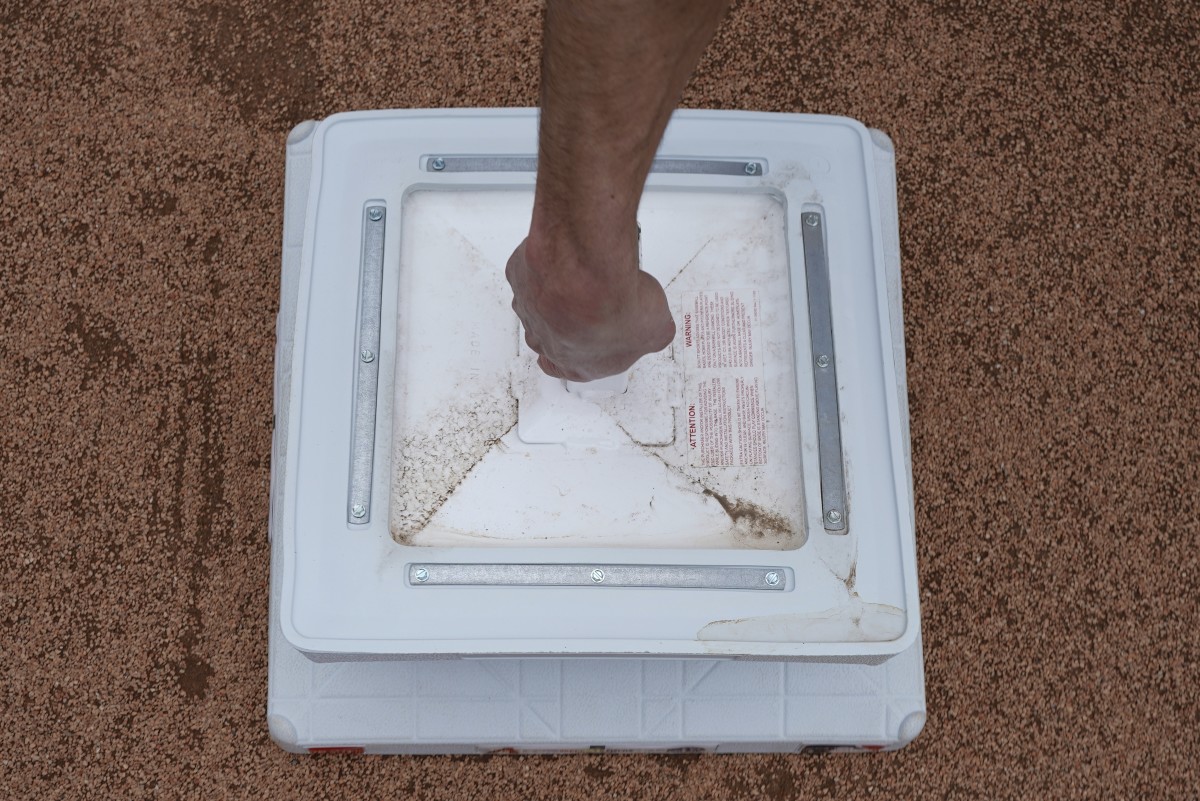MLB's Six Big Rule Changes Ranked From Weirdest (Bigger Bases!) to Best
Who’s ready for some baseball?
Now that football is over and the NBA is in its All-Star Weekend, it’s time to start thinking about warmer temperatures and spring and baseball and hot dogs and all that good stuff.
Pitchers and catchers started to reporting to spring training this week, and before we know it we’ll be celebrating the start of a new MLB season.
Before we get there, though, we need to look at six big rule changes that are going into place this season and will have the game looking and feeling different.
Let’s rank them from weirdest to best.
6. The bases will be a lot bigger. (Super weird)
Yes, you read that correctly - the bases this season are going to be bigger. The bases will now be 18 inches by 18 inches instead of the 15-by-15 that we’ve seen basically forever. This was done to help prevent injuries for base runners and fielders.
Check them out:

These two stole a combined 665 bases in their Big League careers!
— MLB Network (@MLBNetwork) February 16, 2023
Harold Reynolds and @rajai11davis discuss how they expect bigger bases will impact the running game in 2023.
📺 MLB Tonight: What's New in 2023 - tonight at 7pm ET pic.twitter.com/FLLwxfSJni
5. Balks will be called more if pitchers make weird movements. (Kinda weird)
MLB wants to speed things up with a pitch clock (which we’ll get to shortly) and they want pitchers to stop doing a lot of unnecessary movements that could mess with the starting point of the pitch clock.
The new rule states a pitcher must have a clear point to begin his delivery in order to stop the pitch timer, and Garcia’s multiple steps and arm motions don’t provide that. The rule says the pitcher is permitted to take one step back (or laterally) and one step forward. Thus, taking multiple steps before lifting the free leg is now deemed an illegal pitch movement.
This will no longer be allowed:
Windups such as Luis Garcia’s are now illegal under MLB’s new balk rules pic.twitter.com/9gEOhvdgMl
— Talkin’ Baseball (@TalkinBaseball_) February 15, 2023
4. Ghost runners in extra innings is permanent. (Weird but we’ve grown used to it)
The automatic runner on second base in extra innings will remain a thing in regular season games. I know a lot of people don’t like this rule but I’m a fan of it because sometimes extra innings can go on forever and lose all sense of drama. Let’s get these games over with!
3. Using position players to pitch will be harder to do. (This is good!)
I get that a lot of people think it’s fun when a position player comes in to pitch but it also leads to some really bad baseball. There will thankfully be new restrictions on when they can be used:
MLB announced plans to extend new rules for position players pitching into the 2023 season. pic.twitter.com/yQWshyOCMZ
— FOX Sports: MLB (@MLBONFOX) February 13, 2023
2. A pitch clock will be enforced and batters will have to keep up, too. (This is great!)
Baseball can get really slow. Now things will be sped up a bit with a pitch clock that will work as follows:
A pitcher has 15 seconds to throw a pitch when nobody is on base and that time will be bumped up to 20 seconds with runners on base.
Batters will have to hurry up, too:
There will be a pitch clock for MLB games in 2023.
— Codify (@CodifyBaseball) February 9, 2023
Batters must be in the box and alert to the pitcher by the 8-second mark or they will be charged with an automatic strike. pic.twitter.com/4wBGWVtr4p
Here’s a fun graphic that explains it:
How the Pitch Timer ticks.
— MLB (@MLB) February 9, 2023
A behind-the-scenes look at baseball’s new rule. https://t.co/CJQJA9VW4X pic.twitter.com/r5PEolXem7
1. The shift is dead. (This is the best!)
So long, shift! Well, kinda. Hopefully.
MLB has a lengthy explanation of that which you can find right here but let me give the gist of it:
With the new rule changes, defensive teams will be required to have a minimum of four players on the infield, with at least two infielders completely on either side of second base. These restrictions are intended to increase the batting average on balls in play, to allow infielders to better showcase their athleticism and to restore more traditional outcomes on batted balls. The league-wide batting average on balls in play of .290 in 2022 was six points lower than in 2012 and 10 points lower than in 2006.
Teams can still get creative, though:
One thing about the shift ban I learned from today's MLB presentation: Teams can call in an outfielder to serve as a fifth infielder. (They cannot send an INF to the OF anymore.) Would run the risk of more easily allowing an XBH while increasing likelihood of ground ball outs.
— Lindsey Adler (@lindseyadler) February 15, 2023
Here's how that could look:
Talking about this right now on @670TheScore.
— M@ (@MattSpiegel670) February 14, 2023
This is how some MLB teams are going to combat shift restrictions. Still daring lefty sluggers to go to the opposite field, while asking a LF/super utility guy to essentially be a 4th IF & demanding speed & range from a 3B.
Wild. pic.twitter.com/Gsfcsu2Ekz
Should be an interesting year!
